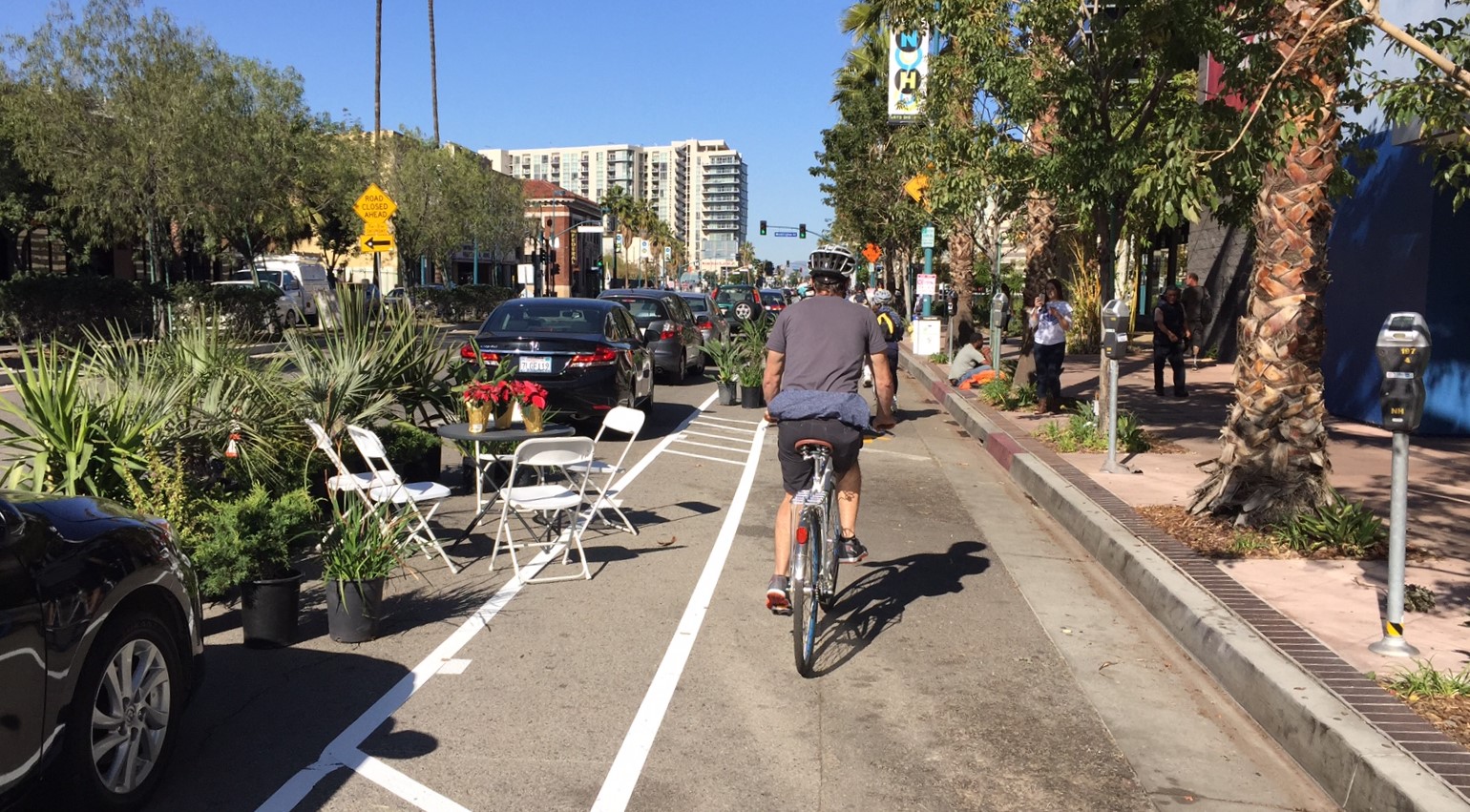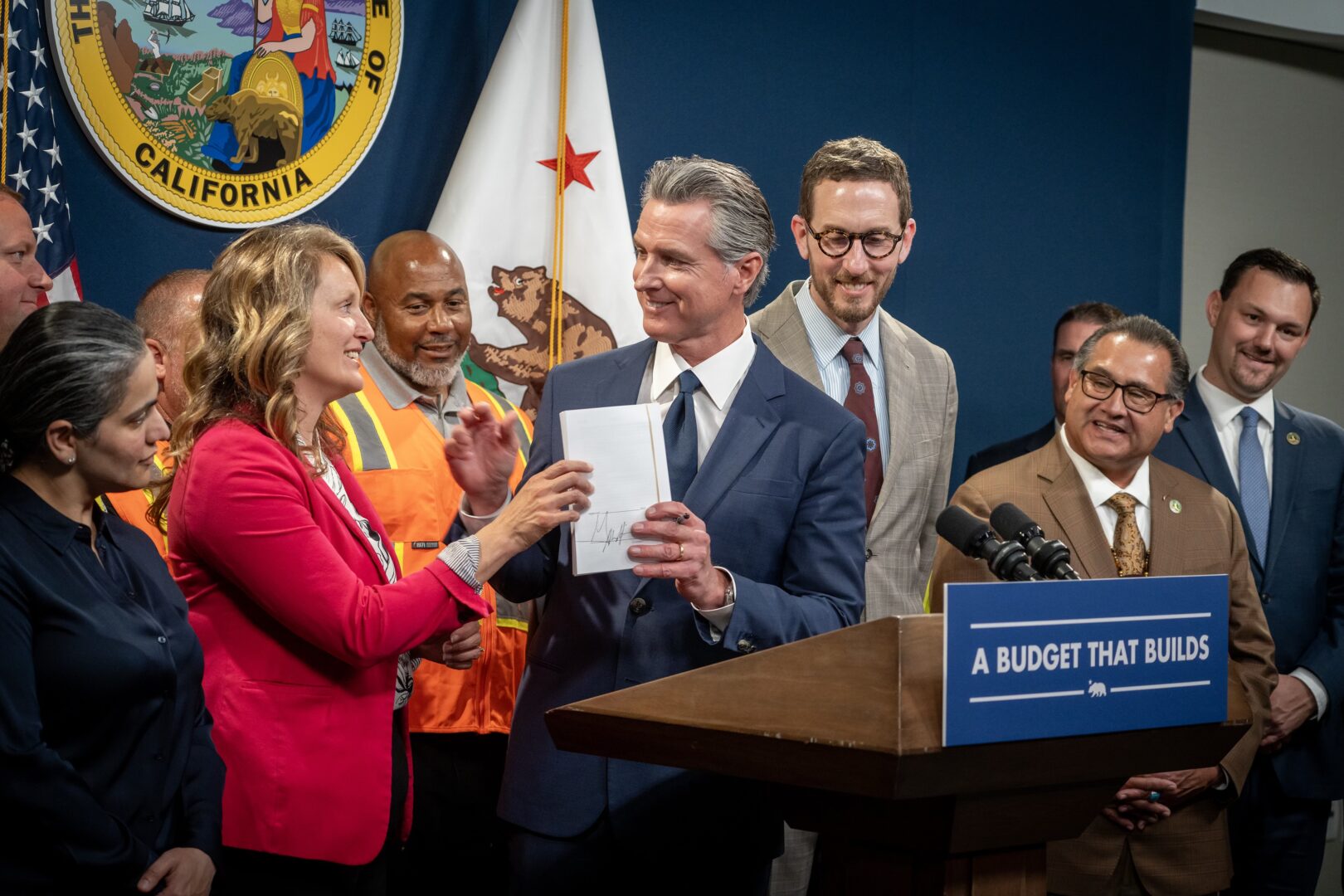California's Active Transportation Program (ATP) is about to receive an infusion of cash, and staff is looking for a few good bicycle and pedestrian projects to give it to.
Instead of being forced to choose a few projects from a long list of worthy ones, as in past funding rounds, ATP staff are now anticipating being able to expand funding to a lot more of the projects that have applied in the last few years.
But they need to know which ones are ready now.
Last year the legislature added $10 million to the ATP from the Greenhouse Gas Reduction Fund (GGRF), which is the repository for cap-and-trade revenue. And starting at the end of 2017, the transportation funding bill just passed by the legislature, S.B. 1, will begin raising new revenue, and a portion of that - $100 million annually - will go to the ATP, basically doubling the program.
This should be welcome news to cities and agencies that applied for funding and didn't make the cut, because now they are much more likely to get their projects funded. But it also means that project managers should get on the stick.
Projects that are eligible and ready will be able to start sooner, since some of the money is available now and more will be coming soon. And because both new funding sources are state-generated, fewer federal requirements apply, which could simplify the process for project planners.
“Part of the push on S.B. 1 is getting some of its money out there now, and getting projects on the ground right away,” said Laurie Waters, Associate Deputy Director of the California Transportation Commission, which oversees the ATP. “S.B. 1 is creating several new programs, but the ATP is an existing program, with an existing structure,” and it has a ready list of scored projects.
ATP staff are asking for two things. First, any ATP project that wants to get going sooner, and can fulfill the requirements of the GGRF, apply for the GGRF funds. Those requirements include showing that the project will reduce greenhouse gas emissions, likely from replacing car trips. Also, half of these funds must go to benefit disadvantaged communities. ATP projects already have a similar requirement, but the ATP has its own definition of what constitutes a disadvantaged community, which is broader than the metric used under the GGRF, so there will be some more paperwork involved.
The second thing ATP staff is asking is that projects that were awarded funding in Cycle 3 and are ready to begin work apply for the S.B. 1 funds. The program's latest funding cycle chose projects in late 2016 and early 2017, but the money wasn't going to be available for allocation until 2019 at the earliest, and in some cases not until 2021. But S.B. 1 funds will be available starting at the end of this year.
Detailed information on the GGRF funds can be found here, and for the S.B. 1 funds here.
“We get about $1 billion in requests for each round of funding,” said Waters, but have only been able to award at the most about a third that much. ATP project applications go through a rigorous scoring process to make sure the best ones are chosen for the limited funding available.
“It seemed silly to do another call for funding,” given the amount of work that has already been done, said Waters. “The ATP is so oversubscribed, and there are a lot of high-scoring projects that we don't fund. So we decided to begin by advancing projects that were awarded in Cycle 3 and are ready to go, then go down the line to find others that scored high but didn't make the cut-off.”
Waters said another benefit of the S.B. 1 revenue is a new flexibility it gives the ATP. Program staff is considering some changes for future funding rounds that may allow them to give project managers more time to complete their projects. Right now, ATP funding cycles force projects to be delivered within a short period of time. “It's difficult to deliver transportation projects in two years,” said Waters. “Usually a project would take a year to complete the environmental review, then there's design, and after that comes construction. Being able to take three years should be a lot better for applicants,” she said.
However, she clarified, “This is just a proposal right now. We'll have to take it to future workshops when we update the ATP guidelines.”
Meanwhile, a two-day public workshop to begin hashing out the details of the programs that will receive funding from S.B. 1 begins tomorrow in Sacramento. Those include existing programs - the State Highway Operations and Protection Program, the ATP, and Local Streets and Roads - and new ones - the Trade Corridor Enhancement Account, Solutions for Congested Corridors, and Local Partnership Programs.
Information and agendas for tomorrow and Friday can be found here.






